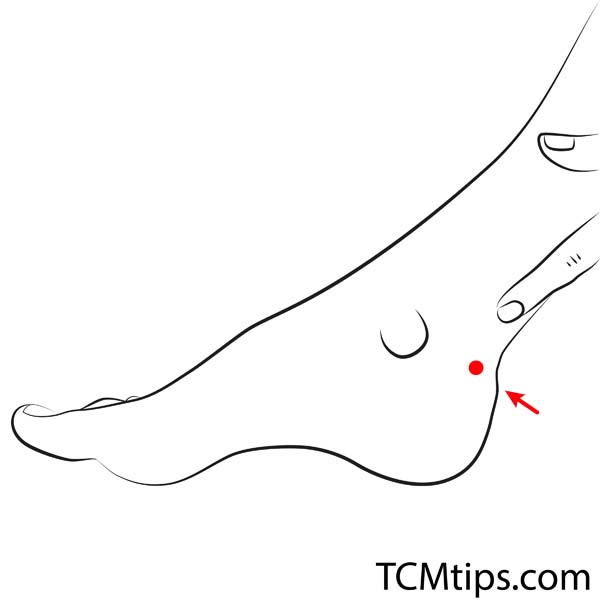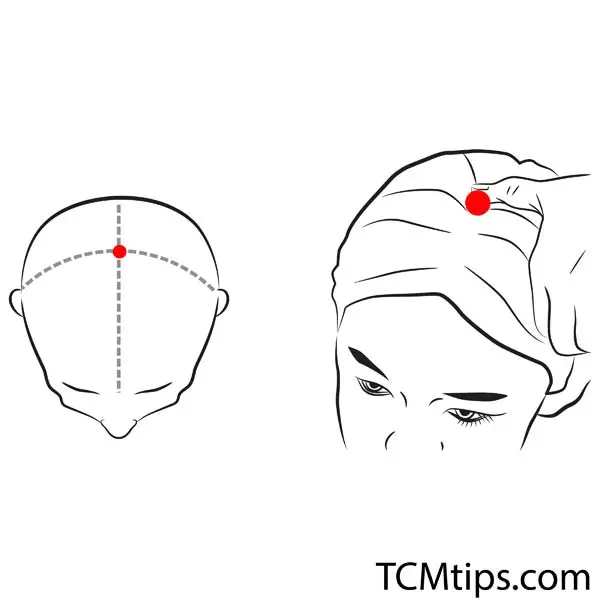In the journey towards a healthier, more vibrant life, we often search for natural and effective solutions that align with our body’s rhythms and needs. This quest is particularly poignant for women navigating the dual challenges of maintaining energy levels amidst the demands of daily life and ensuring their health remains at its peak. In this landscape, the ancient wisdom of Traditional Chinese Medicine (TCM) emerges as a beacon of hope, offering not just remedies but a holistic approach to vitality and well-being.
We had the privilege of speaking with Ms. Mai Sogawa, a seasoned TCM Therapist from Japan, who shared her profound insights into how certain TCM herbs and acupressure points can be pivotal in rejuvenating our energy and enhancing our overall health. According to Ms. Sogawa, “Ginseng and Goji berries are not just supplements but are powerful agents of health, addressing everything from improving blood circulation and skin health to bolstering the spleen and stomach.” She emphasizes the tailored benefits these herbs offer, especially in tackling conditions like bladder inflammation and diminishing eyesight, which become more prevalent with life’s progression.
Beyond herbs, the art of acupressure holds keys to unlocking our body’s energy flows. Ms. Sogawa highlights KI-3, an often-overlooked acupressure point that can significantly enhance kidney function and, by extension, our vitality. This conversation with Ms. Sogawa is not just enlightening; it’s a testament to the rich, nuanced world of TCM and its relevance to modern health challenges.
As we delve deeper into the specifics of how TCM can be a cornerstone of our health strategy, let’s remember that the journey to wellness is as much about understanding these ancient practices as it is about applying them. Join us as we explore the empowering practices of TCM, backed by the expertise of Ms. Sogawa, and discover how we can harness these age-old remedies to fuel our days with energy and vitality.
Energize Your Life: Key Acupressure Points
In Traditional Chinese Medicine, acupressure stands out as a powerful tool for self-healing and energy enhancement. By applying pressure to specific points on the body, we can unlock a reservoir of vitality, tackling fatigue head-on and rejuvenating our spirit. Among the myriad points recognized for their energizing effects, KI-3 emerges as a cornerstone for vitality, as highlighted by Ms. Mai. This section dives into how you can harness the power of KI-3, along with other pivotal points like GV20 and ST36, to boost your energy and overall well-being.
KI-3: The Vitality Enhancer

KI-3, or Kidney 3, is found on your foot, halfway between the tip of the inner ankle bone (medial malleolus) and where the Achilles tendon attaches to the heel. It’s in the soft, indented area that you can feel when you run your finger along this midway line. It’s instrumental in rejuvenating kidney energy which, in TCM, is the foundation of all energy within the body. The kidneys are believed to store our vital essence, and by stimulating KI-3, we can tap into this reservoir to enhance our vitality.
How to Activate KI-3:
- Sit comfortably and locate KI-3 on your inner ankle.
- Using your thumb, apply firm, steady pressure to this point for 3-5 minutes.
- Breathe deeply as you focus on the point, envisioning a flow of energy revitalizing your body.
- Repeat on the other side.
GV20 and ST36: Complementary Points for Energy
While KI-3 works wonders for kidney vitality, GV20 (located on the top of the head) and ST36 (found on the lower leg) serve as powerful allies in your energy-boosting arsenal.


Activating GV20:
- Place your fingers at the top of your head, where they naturally meet. This is GV20.
Apply gentle pressure in a circular motion for 1-2 minutes. - Imagine clarity and awakeness flowing through your mind.
Stimulating ST36:
- Find ST36 four finger widths below your kneecap, one finger width outside the shin bone.
- Press firmly for 3-5 minutes, visualizing energy spreading through your legs and to the rest of your body.
Incorporating these acupressure points into your daily routine can offer a simple yet effective way to energize your life. Whether you’re starting your day, needing an afternoon pick-me-up, or preparing for a restful sleep, these practices offer a natural path to vitality. Remember, the journey to wellness is a personal one; feel free to explore these points at your own pace, listening to your body’s response and adjusting as needed. Through the wisdom of TCM and the guidance of experts like Ms. Mai, unlocking your body’s full energy potential is within reach.
Natural Boosters: Ginseng & Goji Berries

In TCM, the power of nature is harnessed through various herbs known for their life-enhancing properties. Among these, Ginseng and Goji berries stand out for their exceptional ability to recharge the body and boost energy levels. Ms. Mai Sogawa, in her exploration of these potent herbs, sheds light on their significant roles in enhancing vitality and well-being.
Ginseng: The Ultimate Energy Enhancer
Ginseng is celebrated for its diuretic effects, offering a multitude of benefits that include improving edema, addressing phlegm dampness, and reinforcing the spleen and stomach. It’s particularly beneficial for conditions more prevalent in women, such as bladder inflammation and urinary incontinence. Ginseng’s comprehensive health benefits make it a cornerstone herb in TCM for those seeking to invigorate their energy levels.
Incorporating Ginseng into Daily Life:
- Tea: A simple and soothing way to enjoy Ginseng is by preparing it as a tea. This not only aids in hydration but also ensures you receive its benefits throughout the day.
- Supplements: For a more concentrated dose, Ginseng supplements can be an effective way to incorporate this herb into your health regimen.
- Cooking: Adding Ginseng to soups or broths can imbue your meals with its health-enhancing properties, making it a delicious and nutritious addition to your diet.
Goji Berries: Edible Eye Drops for Overall Well-being
Goji berries nourish the liver, kidneys, and lungs, and are especially effective in promoting eye health, earning them the moniker “edible eye drops.” These berries are beneficial for diminishing eyesight, blurred vision, and dizziness. Their capacity to improve blood circulation also makes them an excellent choice for those looking to address coldness and promote healthy skin.
Bringing Goji Berries into Your Routine:
- Snacking: Goji berries make for a nutritious snack that can easily be incorporated into your daily routine, eaten on their own or mixed into yogurt or oatmeal.
- Tea: Brewing Goji berries in hot water creates a healthful tea that can help improve your energy levels and overall vitality.
- Cooking: Integrating Goji berries into your meals, whether in salads or as part of a dessert, can offer a delightful way to enjoy their benefits.
Both Ginseng and Goji berries offer accessible and effective ways to enhance energy and vitality. By incorporating these herbs into your daily practices, whether through teas, supplements, or cooking, you embrace the TCM philosophy of nurturing the body with nature’s bounty. Ms. Sogawa’s insights into these herbs not only highlight their potency but also offer practical advice on how to seamlessly integrate them into your life for improved health and energy.
Balancing Act: TCM Diet Essentials

In Traditional Chinese Medicine, the concept of balance is not just a philosophical cornerstone; it’s a practical guide for daily living, especially when it comes to diet. The ancient wisdom of TCM teaches us that the foods we eat significantly impact our energy levels and overall health, with the balance of Yin (cooling) and Yang (warming) foods playing a crucial role. By making mindful dietary adjustments that honor this balance, we can foster a more vibrant and energized existence.
The Yin-Yang of Food:
Understanding the Yin and Yang properties of foods can help in creating meals that harmonize with our body’s needs. Yin foods, like fruits and green vegetables, offer cooling properties, ideal for balancing internal heat. On the other hand, Yang foods, such as ginger and red meat, provide warming effects, perfect for those feeling cold or sluggish.
Practical TCM Dietary Adjustments:
- Start Your Day Balanced: Begin with a warming porridge in cooler months and a cool, fruit-based breakfast in warmer seasons. This simple adjustment can set the tone for your energy levels throughout the day.
- Incorporate Five Element Foods: Each of the five elements (Wood, Fire, Earth, Metal, Water) corresponds to different organs and flavors. Integrating a variety of flavors and colors in your meals can help nourish your organs and promote energy flow.
- Mindful Snacking: Opt for snacks that align with your body’s needs at the moment. Feeling overheated? Reach for cucumber slices or watermelon. Feeling cold? Warm nuts or a cup of ginger tea might be just what you need.
Meal Ideas That Embrace TCM Principles:
- For a Boost of Energy: A balanced lunch of steamed fish (Yang), sautéed leafy greens (Yin), and brown rice (neutral) can provide a midday energy boost without overwhelming your digestive system.
- To Wind Down: A dinner featuring pumpkin soup (Yin) with a side of quinoa and roasted root vegetables (Yang) can support your body’s natural move towards rest and rejuvenation in the evening.
By embracing these TCM dietary principles, you’re not just feeding your body; you’re nourishing your Qi (vital energy) and promoting a harmonious balance within. These adjustments, though simple, can profoundly impact your vitality and well-being, empowering you to live a life that feels balanced, energized, and deeply aligned with the natural world.
Mindful Moments: Energizing Through Inner Peace

Discovering a sanctuary of calm within the hustle of everyday life is more than a luxury—it’s a necessity for maintaining mental clarity and physical vitality. The practice of meditation and mindfulness, deeply rooted in centuries of tradition, offers a pathway to achieving this balance. These practices not only enhance our mental well-being but are also instrumental in boosting our energy levels, fostering a sense of inner peace that radiates through all aspects of health.
Meditation for Mental Clarity and Energy:
The quietude of meditation creates a space for the mind to clear and reset, reducing stress and allowing for a surge in energy. Even a few minutes of daily meditation can significantly impact your day, providing a fresh burst of energy and a clearer perspective.
Simple Meditation Practice:
- Find a Quiet Space: Begin by finding a comfortable and quiet spot where you can sit without interruption.
- Focus on Your Breath: Close your eyes and bring your attention to your breath. Notice the sensation of air entering and leaving your body.
- Acknowledge Thoughts: As thoughts arise, acknowledge them without judgment and gently guide your focus back to your breath.
- Set a Timer: Start with 5 minutes a day, gradually increasing the time as you become more comfortable with the practice.
Mindfulness for Daily Vitality:
Mindfulness, the practice of being fully present in the moment, can transform mundane tasks into opportunities for stress relief and energy enhancement. By engaging fully with the present moment, we can mitigate the draining effects of multitasking and constant digital stimulation.
Incorporating Mindfulness into Daily Activities:
- Mindful Eating: Take the time to savor each bite, paying attention to the flavors, textures, and sensations. This practice can improve digestion and satisfaction with meals.
- Mindful Walking: Transform a simple walk into a rejuvenating practice by focusing on the sensation of your feet touching the ground and the sounds and sights around you.
- Mindful Breathing: Whenever you feel overwhelmed, take a moment to focus solely on your breath. This can be a quick and effective way to reset your energy levels.
By integrating these practices into our daily routine, we not only enhance our mental and physical vitality but also cultivate a deeper connection with ourselves and our environment. The journey toward well-being is enriched by moments of mindfulness and meditation, offering a wellspring of energy that supports our healthiest, most vibrant selves.
 P. Sze
P. Sze 















